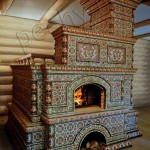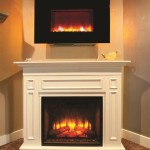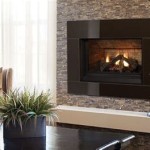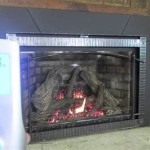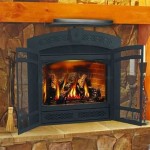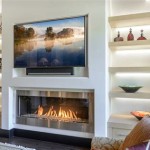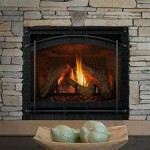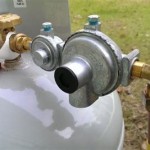Elevating Fireplace Design: The Allure of Crown Molding on Mantels
The fireplace, a traditional focal point in residences, has undergone significant evolution in design and functionality. Among the various elements contributing to a fireplace’s aesthetic appeal, the mantel stands out as a critical component. The architectural detailing applied to the mantel significantly influences the overall ambiance of the room. Integrating crown molding into fireplace mantel designs has emerged as a popular technique for adding sophistication, depth, and a touch of classical elegance. This article explores the multifaceted roles of crown molding in fireplace mantel design, examining its benefits, application techniques, and the various styles that can be achieved.
Crown molding, historically used to bridge the gap between walls and ceilings, provides a visually appealing transition. Its application to fireplace mantels extends this principle, offering a refined finish that enhances the mantel’s presence. This technique is not merely decorative; it contributes to the overall architectural integrity of the space, creating a more cohesive and polished look. The selection of appropriate crown molding styles is crucial to achieving the desired aesthetic, requiring careful consideration of the room’s existing architectural elements and design preferences.
The Aesthetic and Functional Advantages of Crown Molding on Fireplace Mantels
The decision to incorporate crown molding into a fireplace mantel design is often driven by a desire to enhance the visual appeal of the room. However, the advantages extend beyond mere aesthetics. Crown molding adds dimension and visual interest, preventing the mantel from appearing flat or unremarkable. It creates a sense of depth and complexity, drawing the eye and emphasizing the fireplace as a central feature. This is particularly effective in rooms with high ceilings, where the crown molding can help to balance the proportions and create a more inviting atmosphere.
From a functional perspective, crown molding can serve to conceal imperfections or uneven transitions between the mantel shelf and its supporting structure. This is especially useful in older homes where the original construction may not be perfectly aligned. The molding acts as a visual buffer, smoothing out inconsistencies and creating a cleaner, more refined appearance. Furthermore, crown molding can be chosen to complement existing architectural details in the room, such as window trim or door frames, thereby unifying the overall design scheme. This cohesive approach contributes to a more harmonious and aesthetically pleasing living space.
The versatility of crown molding also allows for a wide range of design options. It can be painted to match the mantel or the surrounding walls, creating a seamless look. Alternatively, it can be stained to highlight the natural wood grain, adding warmth and character to the room. The choice of finish depends on the desired effect and the overall design aesthetic. In some cases, crown molding may even be gilded or otherwise embellished to create a more opulent and luxurious look.
Selecting the Right Crown Molding Style for Your Fireplace Mantel
The diverse range of crown molding styles available presents a significant opportunity to tailor the fireplace mantel to specific design preferences. However, this variety also necessitates careful consideration to ensure that the chosen style complements the overall aesthetic of the room. The architectural style of the home, the existing trim work, and personal preferences should all be taken into account when making this selection.
For traditional homes, classic crown molding profiles such as cove molding, ogee molding, and dentil molding are often the most appropriate choices. These styles feature elegant curves and intricate details that evoke a sense of timelessness and sophistication. Cove molding, with its simple concave curve, is a versatile option that can be used in a variety of settings. Ogee molding, characterized by its S-shaped profile, adds a touch of formality and grandeur. Dentil molding, featuring a series of small, evenly spaced blocks, provides a more decorative and ornate look.
In contemporary homes, simpler and more minimalist crown molding styles are generally preferred. Square-edged molding or simple cove molding with clean lines can create a sleek and modern look. These styles emphasize functionality and simplicity, reflecting the minimalist aesthetic of contemporary design. Painted in a neutral color, such as white or gray, these types of crown molding can seamlessly integrate into the overall design scheme without overwhelming the space.
For transitional homes, which blend elements of both traditional and contemporary design, a wider range of crown molding styles may be suitable. A moderately detailed ogee molding or a cove molding with a subtle curve can provide a balanced look that complements the transitional aesthetic. The key is to choose a style that is not overly ornate or overly simplistic, but rather strikes a harmonious balance between the two extremes.
Beyond the basic profiles, other factors to consider when selecting crown molding include the size and scale of the molding. The size of the molding should be proportionate to the size of the mantel and the overall dimensions of the room. A too-small molding may appear insignificant, while a too-large molding may overwhelm the space. The scale of the molding should also be considered in relation to the other architectural details in the room. A consistent scale throughout the room will create a more cohesive and harmonious look.
Installation Techniques and Considerations for Crown Molding on Fireplace Mantels
Proper installation is crucial to achieving a professional and aesthetically pleasing result when applying crown molding to a fireplace mantel. The installation process typically involves several steps, including measuring, cutting, and securing the molding to the mantel. Accurate measurements and precise cuts are essential to ensure a tight and seamless fit. The tools required for the job include a miter saw, a measuring tape, a level, a nail gun or hammer, and wood glue or construction adhesive.
Before beginning the installation, it is important to prepare the surface of the mantel. This may involve cleaning the surface to remove any dust or debris, and filling any gaps or imperfections with wood filler. A smooth and even surface will provide a solid base for the crown molding and ensure a more professional-looking result.
The first step in the installation process is to measure the perimeter of the mantel and cut the crown molding to the appropriate lengths. This requires the use of a miter saw to create accurate angles for the corners. The most common type of corner cut is a 45-degree miter cut, which creates a seamless joint when the two pieces of molding are joined together. However, depending on the shape of the mantel, other angles may be required.
Once the pieces of crown molding have been cut, they can be secured to the mantel using wood glue or construction adhesive and nails or screws. The adhesive will provide a strong and permanent bond, while the nails or screws will hold the molding in place while the adhesive dries. It is important to use a level to ensure that the molding is installed straight and evenly.
After the molding has been secured to the mantel, any gaps or imperfections can be filled with wood filler. Once the wood filler has dried, it can be sanded smooth and painted or stained to match the molding. The final step is to apply a clear coat of sealant to protect the molding from moisture and wear. This sealant will also help to enhance the beauty of the wood and create a more durable finish.
Safety precautions should be observed during the installation process. Wearing safety glasses to protect the eyes from flying debris is recommended. Furthermore, working in a well-ventilated area is essential, especially when using adhesives or sealants that may emit fumes. If the mantel is located high above the ground, using a stable ladder or scaffolding is crucial to prevent falls.
In conclusion, the integration of crown molding into fireplace mantels represents a powerful design tool for enhancing the aesthetic appeal and architectural integrity of living spaces. Understanding the various styles, installation techniques, and associated considerations allows for informed decisions that result in a visually stunning and cohesive design.

Diy Mantel Update With Crown Molding Table And Hearth

Diy Mantel Update With Crown Molding Table And Hearth

Fireplace Mantels Michigan Crown Molding

Diy Mantel Update With Crown Molding Table And Hearth

Super Simple Mantel

Result For Fireplace Crown Molding Build A Mantels

Diy Mantel Update With Crown Molding Table And Hearth

Fireplace Mantels Surrounds Custom Made

Diy Mantel Update With Crown Molding Table And Hearth

How To Build Fireplace Mantel 102 Part 5 Make The Hood Joy Of Moldings
Related Posts

